
views
X
Trustworthy Source
PubMed Central
Journal archive from the U.S. National Institutes of Health
Go to source
and it occurs in about 1/1000 pregnancies. Pregnant people generally experience appendicitis during the first two trimesters of pregnancy; however, it can also occur in the last trimester. If you are pregnant and worried that you may have appendicitis, see your doctor right away.
Recognizing the Symptoms of Appendicitis

Know the common symptoms of appendicitis. These include: abdominal pain often starting centrally near your belly button and gradually shifting over a few hours towards the right side (this is the most worrisome sign that likely indicates appendicitis) nausea and/or vomiting (beyond what you may have experienced in conjunction with pregnancy) fever lack of appetite.

Monitor any pain you feel. The most reliable sign of appendicitis is pain that starts out dull in and around your belly button and, after a few hours, shifts over to the right side and becomes more intense. The "classic" appendicitis pain is located two-thirds of the way between your belly button and your hip bone (this spot is called McBurney's Point). If you have appendicitis and try to lie on the right side of your body, you will feel the pain more strongly. You may also feel pain when you stand or move. Some people experience pain when they stand because they have an overly stretched round ligament (something that can occur during pregnancy). However, that sort of pain goes away within a few moments. Appendix pain, on the other hand, does not go away, so this is how you can distinguish them.
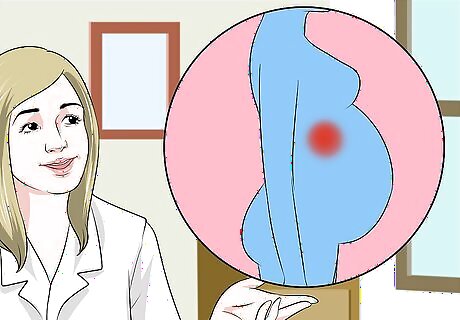
Be aware that you may feel pain higher up in your body if you are in your third trimester. Those who are 28 weeks pregnant and up will feel pain right under the lowest rib on their right side. This is because as your child and your womb grow, your appendix gets moved. Instead of it being located between your belly button and right hip (in McBurney's Point) it will move up your abdomen so that it is pushed right below the right side of your ribcage.

Pay attention if the pain you feel is followed by vomiting and nausea. As you most likely know, vomiting and pregnancy go hand-in-hand. However, if you have appendicitis, you will feel pain first and then you will vomit (or the nausea and vomiting will be worsened as compared to what they were previously). Also, if you are later along in your pregnancy (after the initial vomiting stage has passed), nausea and vomiting are much more likely to indicate something else going on like appendicitis.

Be aware if you suddenly develop a fever. When you have appendicitis, a low grade fever usually develops. A low-grade fever by itself is not too much of a cause for alarm. However, it is really the combination of fever, pain, and vomiting that should concern you. If you experience all three of these symptoms at once, you should go see your doctor.

Monitor any paleness, sweating, or lack of appetite that you experience. Both sweating and paleness can be brought on by the nausea and fever you have when your appendix becomes inflamed. You will also lose your appetite - this happens to anyone experiencing appendicitis, regardless of whether they are pregnant or not.
Undergoing a Physical Examination
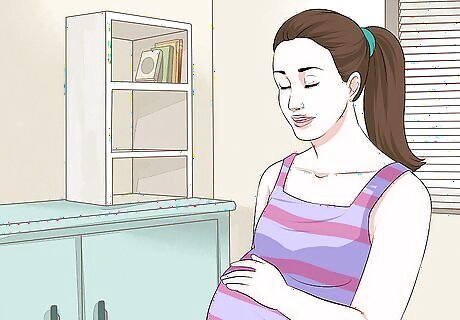
Stay calm and prepare for the visit to your doctor. Going to the doctor, especially in a stressful situation like this one, can be nerve-wracking so it is best to know what you are going to experience. The abdominal exams your doctor will perform are listed in the following steps. It is best to see a doctor in the emergency room. Appendicitis is a condition that should be treated promptly if you have it, so it is recommended to be seen in the hospital where tests can be performed quickly if needed.
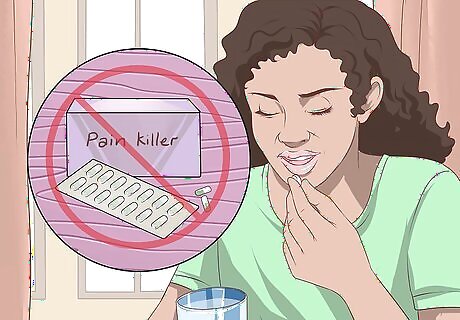
Avoid taking pain medications before going to see your doctor. While you will be experiencing pain, that pain is one of the only ways doctors can diagnose appendicitis in pregnant people so masking it with medication could be detrimental.

Do not eat, drink, or take any laxatives before seeing your doctor. Most people see a physician in the emergency room when they are worried about appendicitis, so the wait shouldn't be too long. The reason refraining from eating and drinking is important is that an empty stomach is required for certain procedures done by doctors. Also, it is easier on your digestive tract and reduces the chance of your appendix bursting if you do in fact have appendicitis.
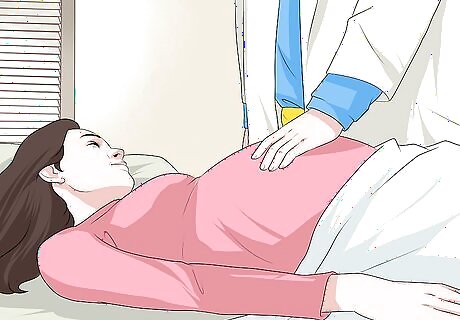
Know that your doctor will feel around your stomach testing for pain. There are a variety of tests doctors perform in order to determine the cause of abdominal pain to figure out whether or not it is appendicitis. These include pressing around your abdomen to elicit painful areas, as well as tapping and testing for "rebound tenderness" (pain after they release the pressure of their hand). The tests may seem redundant and time-consuming, but know that these can be very helpful to your doctor in figuring out exactly what is going on.
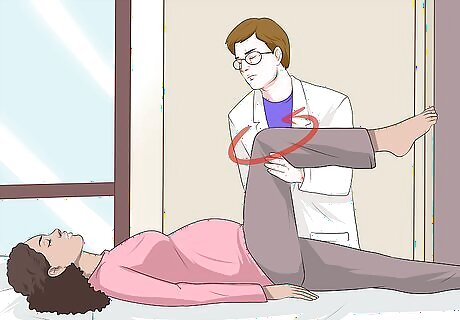
Be prepared for a rotation of the hip test. This test will look for the "Obturator sign," which is pain that occurs when your hip is rotated. Your doctor will hold on to your right knee and ankle and then bend your hip and knee while rotating your leg inwards and outwards. Pay attention to any pain you feel in your lower right quadrant of your abdomen - tell your doctor if you feel pain in that area because it could mean that there’s an irritation of the obturator muscle happening, which is a sign of appendicitis.

Expect a leg extension test. Your doctor will ask you to lie on your side, and he or she will extend your leg asking if you feel pain. This is called the "Psoas test" and, when positive for increased pain, it is another indicator of appendicitis.
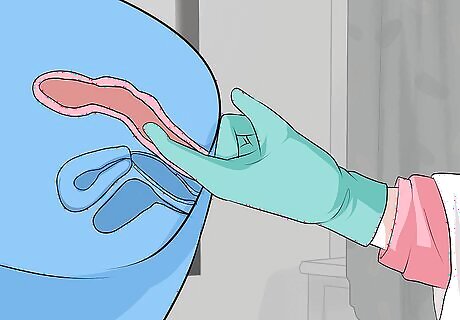
Be ready for a rectal exam. Although the rectal exam does not relate directly to the diagnosis of appendicitis, many physicians have been trained to do it as a way to exclude the possibility of something else going on. So do not be surprised if this occurs during the visit with your physician.
Using Medical Tests to Confirm the Diagnosis
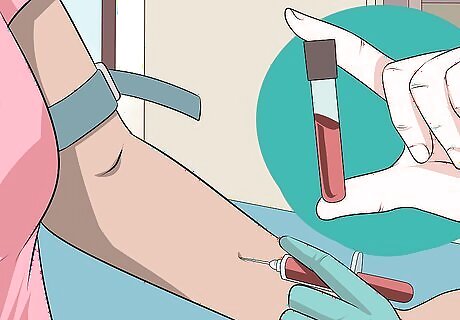
Be ready to get some blood work done. Your white blood cell counts are usually elevated with appendicitis. However, this test is less helpful in pregnant people than in other patients; this is because your white blood cell counts are already increased in pregnancy, so it does not necessarily indicate appendicitis.
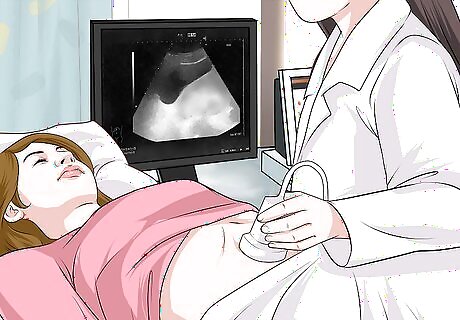
Ask your doctor for an ultrasound. Ultrasound is the "gold standard" (most highly recommended) diagnostic test for appendicitis in pregnant people. It uses ultrasound echoes to create a picture and to help doctors see if you have an inflamed appendix. Generally people who come into the ER with suspected appendicitis receive a CT scan. However, most doctors prefer ultrasound in pregnant people because it won't cause harm to your baby. Ultrasounds can successfully detect the majority of cases of appendicitis.
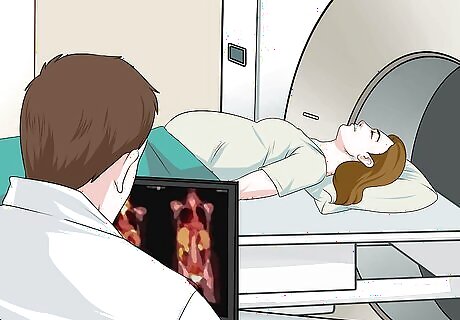
Be open to the possibility of other imaging tests. After 35 weeks of pregnancy, all imaging tests become complicated because of the size of the pregnancy making it hard to see the appendix. At this point, your doctor may recommend a CT scan or an MRI to better visualize the appendix to see if it is inflamed.




















Comments
0 comment